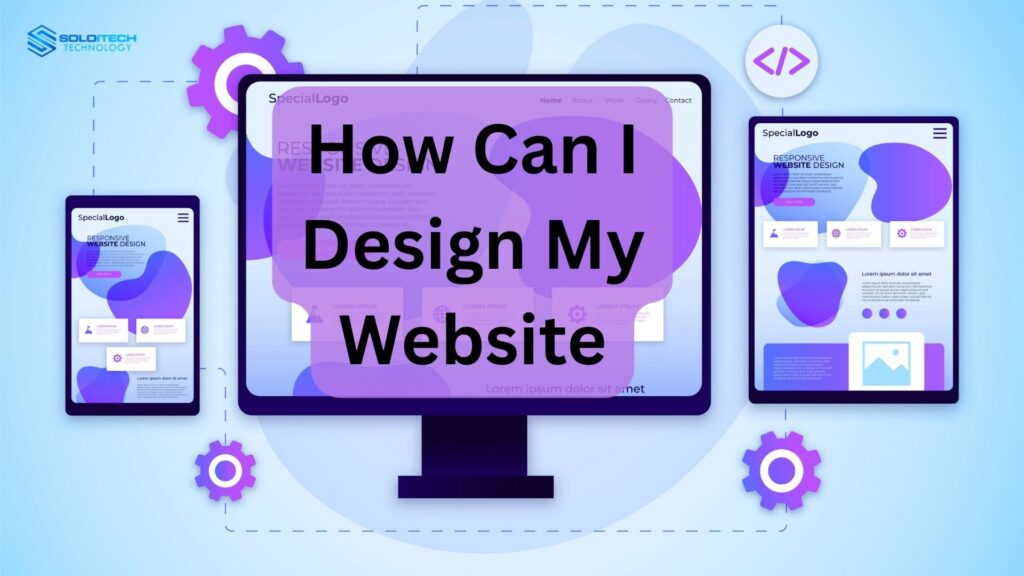Today having a website is not optional, it’s mandatory. Whether you’re a small business owner, a freelancer or someone who wants to showcase their portfolio, your website is the first impression people will have of you online. But if you’ve ever asked yourself “How do I design my website?, you’re not alone. The good news is that designing a website today is easier than ever even if you don’t have technical skills. Let’s get into a full guide to help you design your website from scratch, optimize for users and make it look good.
Where Can I Design My Website for Free?
If budget is a concern you might be wondering “Where can I design my website for free?” Well, there are several great options to create a professional looking website for free:
- Wix: Wix is one of the most user-friendly website builders. It offers drag-and-drop features, hundreds of templates, and mobile optimization options.
- WordPress.com: Ideal for bloggers and small businesses, WordPress.com provides customizable templates and easy-to-use content management.
- Weebly: A beginner-friendly platform with simple drag-and-drop functionality and built-in SEO tools.
- Google Sites: Perfect for quick personal projects or portfolios, it’s free and integrates seamlessly with Google Workspace.
Free options come with limitations like branded domain names or ads but are a great place to start and test your design and build your confidence before investing in a paid plan.
Can ChatGPT Design a Website?
You might be surprised to know that AI tools like ChatGPT can help with website design. ChatGPT can’t build the website for you physically but it can:
- Give you website layout ideas based on your niche.
- Write content for your homepage, about page and blog sections.
- Suggest color schemes, fonts and navigation structure.
- Provide code snippets for custom features in HTML, CSS or JavaScript.
For example if you tell ChatGPT “I want a website for my digital marketing agency with a professional homepage and contact form” it can give you a ready to use outline with content ideas and design tips. Combining AI generated suggestions with a website builder can save you so much time and improve the quality of your website.
How Can I Design My Website Myself?
If you prefer a hands on approach designing your website yourself here’s a step by step guide:
1. Define Your Goal
Before you start designing, ask yourself: What is the purpose of my website? Are you selling products, showcasing your portfolio or providing information? Clear goals help you make design decisions that align with your business goals.
2. Choose the Right Platform
Based on your technical skills and goals choose a website platform:
- Wix, Squarespace, Weebly for beginners.
- WordPress.org for advanced customization and flexibility.
- Shopify for e-commerce websites.
3. Plan Your Layout
Sketch out a rough layout of your website including:
- Homepage
- About page
- Services or products page
- Blog (optional)
- Contact page
Think about user navigation, menus should be clear and consistent.
4. Select a Template or Theme
Templates give you a professional look without starting from scratch. Most platforms have hundreds of templates categorized by industry so it’s easier to find one that suits your style.
5. Customize Your Design
Change colors, fonts, images and icons to match your brand. Remember: simplicity is key. Don’t clutter your design and make sure your content is readable.
6. Add Engaging Content
Content is the backbone of your website. Use clear headlines, short paragraphs and visuals to keep visitors engaged. Don’t forget to add a call-to-action (CTA) to get visitors to contact you, subscribe or buy.
How Can I Optimize My Website Design for Mobile Users?
Mobile users are now the majority of internet traffic so your website needs to look and work on smartphones and tablets. Designing for mobile users means:
- Responsive Design: Choose templates that adapt to different screen sizes. Wix, WordPress and Squarespace have responsive templates.
- Simplified Navigation: Use short menus and buttons that are easy to tap on small screens.
- Optimised Images: Compress images to speed up loading without losing quality.
- Readable Fonts: Make sure your font size is big enough to read on mobile devices.
- Fast Loading Times: Mobile users are impatient. Minimise heavy scripts and big images to reduce load times.
By designing for mobile you can improve user experience, reduce bounce rates and improve your search engine rankings.
Extra Tips for Designing a Successful Website
- Use Good Images: Don’t use stock photos that look generic. Real images get more engagement.
- Be Consistent with Your Brand: Colors, fonts and messaging should be the same across all pages.
- Show Social Proof: Testimonials, reviews and client logos build trust with your audience.
- Optimise for SEO: Optimize page titles, meta descriptions and content for search engines to get organic traffic.
- Keep it Fresh: A website isn’t static. Update your content, blog posts and design regularly to keep your audience engaged.
Conclusion
So asking yourself “How do I design my website?” is the first step to having an online presence. Whether you use free platforms, AI tools like ChatGPT or design it yourself from scratch, the key is planning, creativity and optimization. Remember to focus on your goals, keep it simple yet engaging and mobile friendly.

